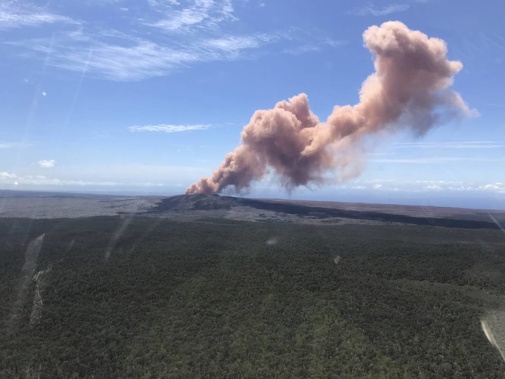
A Hawaii eruption that has destroyed homes and spewed lava into the air is an "eerie analogue" of what could happen in Auckland, scientists say.
Although the long-dormant Auckland Volcanic Field (AVF), doesn't have active shield volcanoes like Hawaii's Kīlauea, the city could still get an eruption that generates lava fountaining and lava flows from fissures.
Scientists working on the DEtermining VOlcanic Risk in Auckland project, or Devora, explained on Facebook the type of magma erupting from Kīlauea is basalt, the same as the type of magma that erupts from Auckland volcanoes.
Basalt was a dark-coloured magma whose low silica content meant it had a low viscosity and therefore formed lava fountains and flowed when it reached the surface.
The Kīlauea eruption had also been associated with earthquakes, ground deformation, large amounts of gases, ground cracking and magma flowing underground.
All of these phenomena could be expected in an Auckland eruption, the scientists said.
They said lava caves all over Auckland are evidence of below-ground lava flows.
The Kīlauea eruption was an "eerie analogue" for how such an eruption could affect Auckland's daily life, they said.
"We are seeing steaming cracks opening in roads, lava blocking roads, lava burning houses, vegetation and power poles; people developing health problems from breathing in gases; power and water outages and evacuation of some areas."
The closest Auckland has to the type of activity on Hawaii is Rangitoto, which is sometimes referred to as a miniature shield volcano.
Auckland's volcanic field has at least 53 individual small volcanoes that have each erupted for a short period of time, with long gaps between each volcano forming.
The time between eruptions has been highly variable, and it is unlikely that someone will experience an eruption in Auckland within their lifetime.
Another difference was that activity on Kīlauea was mainly effusive - gentle extrusion of lava spatter and lava flows - but abundant groundwater and seawater in Auckland meant the city could also get violent explosive eruptions when magma encountered water.
Past eruptions in the local field had typically started with an explosive phase that generated fast-moving clouds of ash, gases and debris away from the vent and excavated a crater.
Some eruptions had then stopped but others continued in a gentler, more effusive manner after the magma stopped interacting with water, leading to the development of scoria cones.
The eruption on Kilauea was preceded by several days of warning signals including earthquakes, which Aucklanders could also expect before a big blow.
A better understanding of how a future eruption might affect Auckland - including how many people might need to be evacuated and how hazards such as lava flows and ash might have an impact - was one of Devora's aims.
PhD student Sophia Tsang had been studying Kīlauea's past lava flows to learn lessons for Auckland.
"It is humbling to witness the reality of how devastating lava flows can be, and it makes me determined to learn more about lava flows so Auckland and other places can be better prepared for a future eruption."
GeoNet closely monitors the Auckland Volcanic Field through a network of seismometers.
GeoNet and Devora scientists work closely with Auckland Emergency Management to ensure that hazard management and evacuation plans are up to date.
Auckland Emergency Management's principal science advisor, Dr Angela Doherty, said the situation in Hawaii was going to provide important lessons for future planning.
"While the first Aucklanders may have seen the most recent eruption in the Auckland Volcanic Field at Rangitoto 550 years ago, our population and city has grown greatly since then, so we are watching events in Hawaii very closely," Doherty said.
"Scientists from the Hawaii Volcano Observatory and our counterparts at the County of Hawaiii Civil Defence are advising residents that they may face weeks or even months of disruption.
"Observations we can take from how things unfold in Hawaii over this period will provide valuable information for our future volcanic contingency plans."
Take your Radio, Podcasts and Music with you








